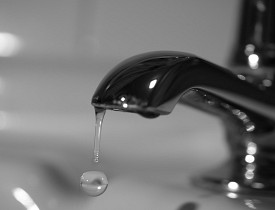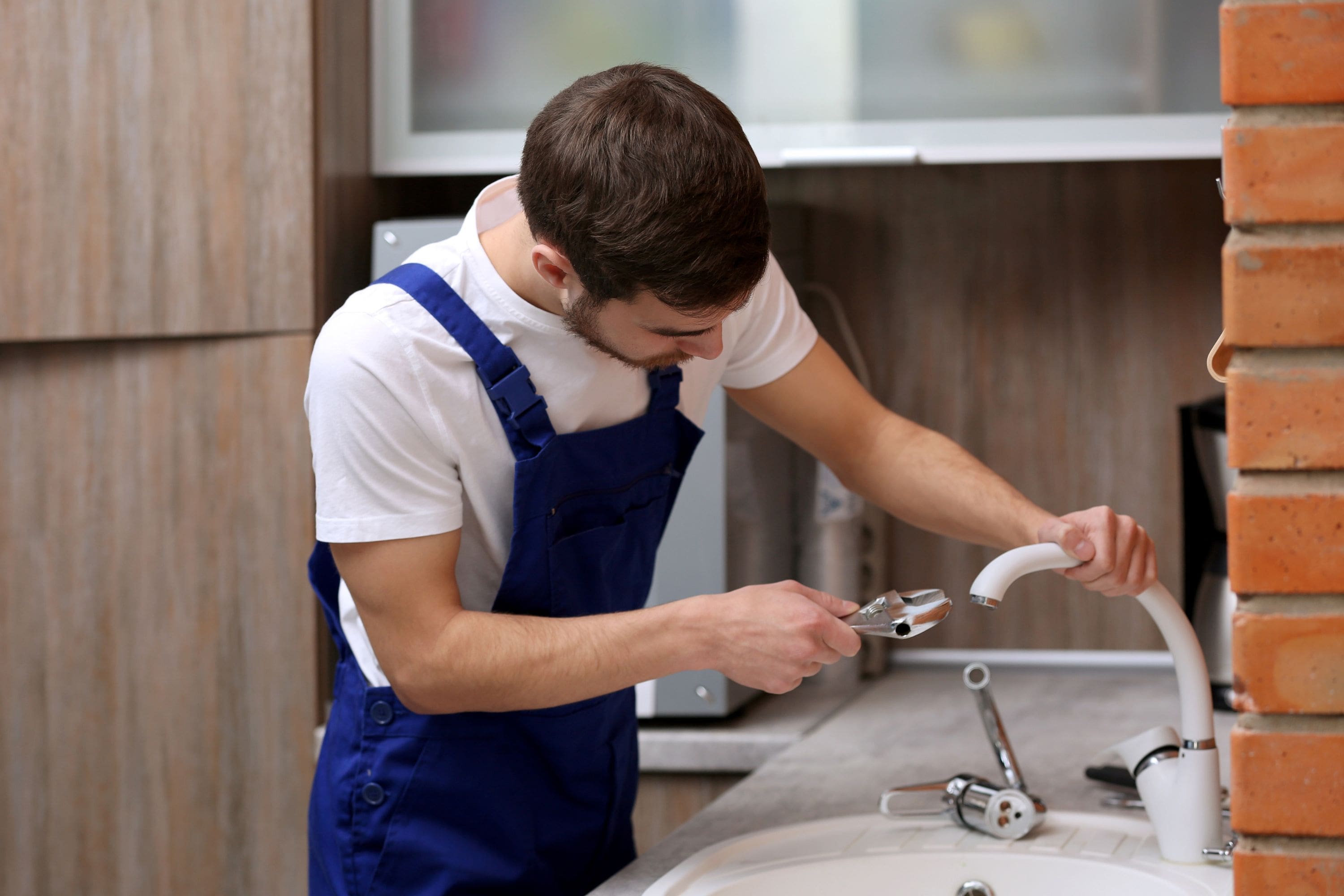When It's Essential to Fix a Malfunctioning Faucet
When It's Essential to Fix a Malfunctioning Faucet
Blog Article
We have encountered this post involving Should I Repair or Replace a Leaky Faucet? below on the web and reckoned it made perfect sense to share it with you here.

Trickling faucets might seem like a small trouble, but their impact goes beyond just the nuisance of the audio. From drainage to sustaining unnecessary monetary expenses and health and wellness threats, overlooking a trickling tap can bring about different effects. In this post, we'll look into why it's vital to resolve this common house problem promptly and effectively.
Wastefulness of Water
Ecological Impact
Dripping taps contribute significantly to water wastage. According to the Epa (EPA), a single faucet leaking at one drip per second can lose greater than 3,000 gallons of water annually. This not only pressures water resources yet additionally impacts communities and wildlife based on them.
Step-by-Step Overview to Repairing a Dripping Tap
Tools Needed
Prior to attempting to fix a trickling tap, collect the essential devices, including an adjustable wrench, screwdrivers, replacement parts (such as washing machines or cartridges), and plumber's tape.
Common Faucet Issues and Their Solutions
Identify the type of faucet and the certain concern creating the drip. Common issues consist of damaged washing machines, corroded shutoff seats, or faulty O-rings. Describe maker directions or online tutorials for detailed support on fixings.
Financial Prices
Increased Water Bills
Beyond the ecological influence, dripping taps can inflate water expenses considerably. The collected wastefulness in time translates into higher utility costs, which could have been avoided with prompt repair work.
Prospective Property Damages
In addition, prolonged dripping can lead to damage to components and surfaces bordering the faucet. Water buildup can create staining, corrosion, and even architectural concerns if left ignored, resulting in extra repair service prices.
Wellness Issues
Mold And Mildew and Mildew Development
The continuous existence of wetness from a dripping faucet creates a suitable setting for mold and mold development. These fungi not just compromise interior air top quality yet also pose wellness risks, especially for individuals with breathing problems or allergic reactions.
Waterborne Illness
Stagnant water in dripping taps can come to be a breeding place for bacteria and other microorganisms, boosting the threat of waterborne diseases. Pollutants such as Legionella bacteria thrive in stagnant water, potentially leading to serious ailments when consumed or inhaled.
DIY vs. Specialist Repair
Advantages and disadvantages of DIY Repair
While some might try to deal with a dripping tap themselves, DIY fixings include their own collection of difficulties. Without correct understanding and tools, do it yourself efforts can intensify the concern or cause insufficient fixings, extending the trouble.
Benefits of Employing a Professional Plumber
Working with an expert plumber makes certain that the underlying root cause of the leaking faucet is attended to effectively. Plumbing professionals have the experience and devices to detect and repair tap concerns successfully, saving time and reducing the danger of more damage.
Ecological Duty
Individual Payment to Conservation
Taking duty for taking care of trickling faucets lines up with broader initiatives towards water preservation and environmental sustainability. Every individual's activities jointly make a considerable impact on preserving priceless sources.
Lasting Living Practices
By focusing on punctual repair work and embracing water-saving habits, people add to lasting living practices that profit both present and future generations.
Preventive Measures
Regular Maintenance Tips
To stop leaking faucets, execute regular upkeep such as cleaning aerators, examining for leakages, and changing damaged parts without delay. Additionally, consider installing water-saving gadgets or updating to a lot more efficient components.
Significance of Prompt Fixes
Resolving leaking faucets as quickly as they're observed prevents additional water wastage and possible damage, eventually saving both water and cash in the future.
Effect On Home Worth
Perception of Well-Maintained Property
Preserving a home in good condition, including dealing with upkeep problems like dripping faucets, enhances its regarded value and desirability amongst prospective buyers or renters.
Influence on Resale Worth
Characteristics with well-maintained plumbing fixtures, including faucets, command greater resale worths in the real estate market. Addressing dripping taps can add to a positive perception throughout property inspections and negotiations.
Conclusion
Dealing with a trickling faucet goes beyond plain benefit; it's a vital step towards saving water, reducing monetary costs, and safeguarding wellness and property. Whether with DIY fixings or specialist aid, taking action to take care of dripping taps is a small yet impactful way to promote accountable stewardship of sources and add to a healthier, more sustainable future.
Why Are My Faucets Dripping (And Can I Fix it Myself)?
Causes of a Dripping or Leaking Faucet
Whether you’re hearing drops of water falling and hitting a sink, or noticing water ooze out from the base of the spout, you shouldn’t ignore a dripping or leaking faucet. And, the good news is, sometimes you can fix the problem yourself.
In this article, we’ll review a few common causes of dripping and leaky. We’ll also walk you through some basic ways to find the problem and handle it without calling anyone — and let you know when to call in a pro.
But, no matter what the cause, or whether you can handle it on your own, the sooner you address it, the better.
Each drip may be a tiny amount of water. But, they all add up quickly. According to the U.S. Geological Survey, one faucet losing one drop every 20 seconds — five a minute — wastes around a liter of water every day, and 173 gallons a year.
Add in more than one in your house, and it’s a lot of water to waste. So, we’ll help you get to the bottom of things quickly.
Four Reasons Your Faucet May Be Dripping
Aerator is Damaged or Unseated Valve Seat is Corroded O Ring is Loose or Worn Out Part of the Assembly is Loose Aerator is Damaged or Unseated
If you unscrew the end of your faucet, you’ll find the aerator. It’s the little stem piece with a screen on it that shuts off the water circulation.
If it’s damaged, or if it’s not sitting right, it will allow water to pass through.
Valve Seat is Corroded
Next is the valve seat, which is connected to the washer. If the washer wasn’t in place correctly, then it could have ground against the seat. Over time, this damages the valve seat.
The problem could also be corrosion: Over time, the part has worn out, and it’s now allowing water to pass through.
O Ring is Loose or Worn Out
Since the o ring is only a small rubber gasket, it’s a common reason why the faucet is dripping. You’ll find it at the base of the faucet, and it’s there to keep water from coming out where it’s not supposed to.
However, it’s common for the o ring to wear out over time. When it does, you’ll notice a drip.
Part of the Assembly is Loose
So far, we’ve looked at a few small, specific parts. But, the problem could be anywhere in the assembly if something’s out of place.
Even if a part isn’t damaged, over time, it may have become loose or dislodged. It could be the parts we mentioned, or the aerator at the tip of the faucet, the stem itself,
Can I Fix a Leaky Faucet Myself?
Depending on the problem, and how handy you are, there’s a chance you can fix a leaky faucet without calling a professional. But, you do run the risk of making the problem worse.
If it’s a small drip, you can certainly try a few troubleshooting tactics. We’ll walk you through them in a moment.
But, no matter what, your first step should be shutting off the water coming into the faucet. You should find a shutoff valve under the sink on the pipes leading to it. Turn each one clockwise until they close tightly.
Next, make sure you have the right tools for whatever you’re attempting. It’s tempting to make do with what you have. But, you need the right ones for a reason: You’re often dealing with small parts that can break if you handle them carelessly.
If you’re feeling confident, here are some places to start.
Items Near the Tip of the Faucet
A few of the parts we mentioned — particularly the valve seat and washer — are located at the tip of the faucet where the water comes out. They’re easy to access, making it a good place to start.
Check the O Ring
To check the o ring, you’ll need to take off the spout at the base. It’s easiest on kitchen sinks with long spouts, versus the smaller, bulkier base on most bathroom sinks.
Either way, this can be tricky, so do it carefully and don’t force anything. If it’s not coming right off, you’re much better off calling in a pro than possibly breaking something.
For a kitchen sink, there’s usually a nut or coupling assembly at the base of the spout. These often slide off easily without using any tools.
Once you’ve disassembled those parts, gently but forcefully twist off the spout.
Then, you can see the o rings. There should be two of the rubber gaskets on the base. If they look worn or damaged, replace them, and see if that solves the problem.

I recently found that review about 4 Common Reasons for a Leaky Faucet when perusing the web. Please pause to share this blog posting if you enjoyed reading it. Bless you for your time. Revisit us soon.
Report this page